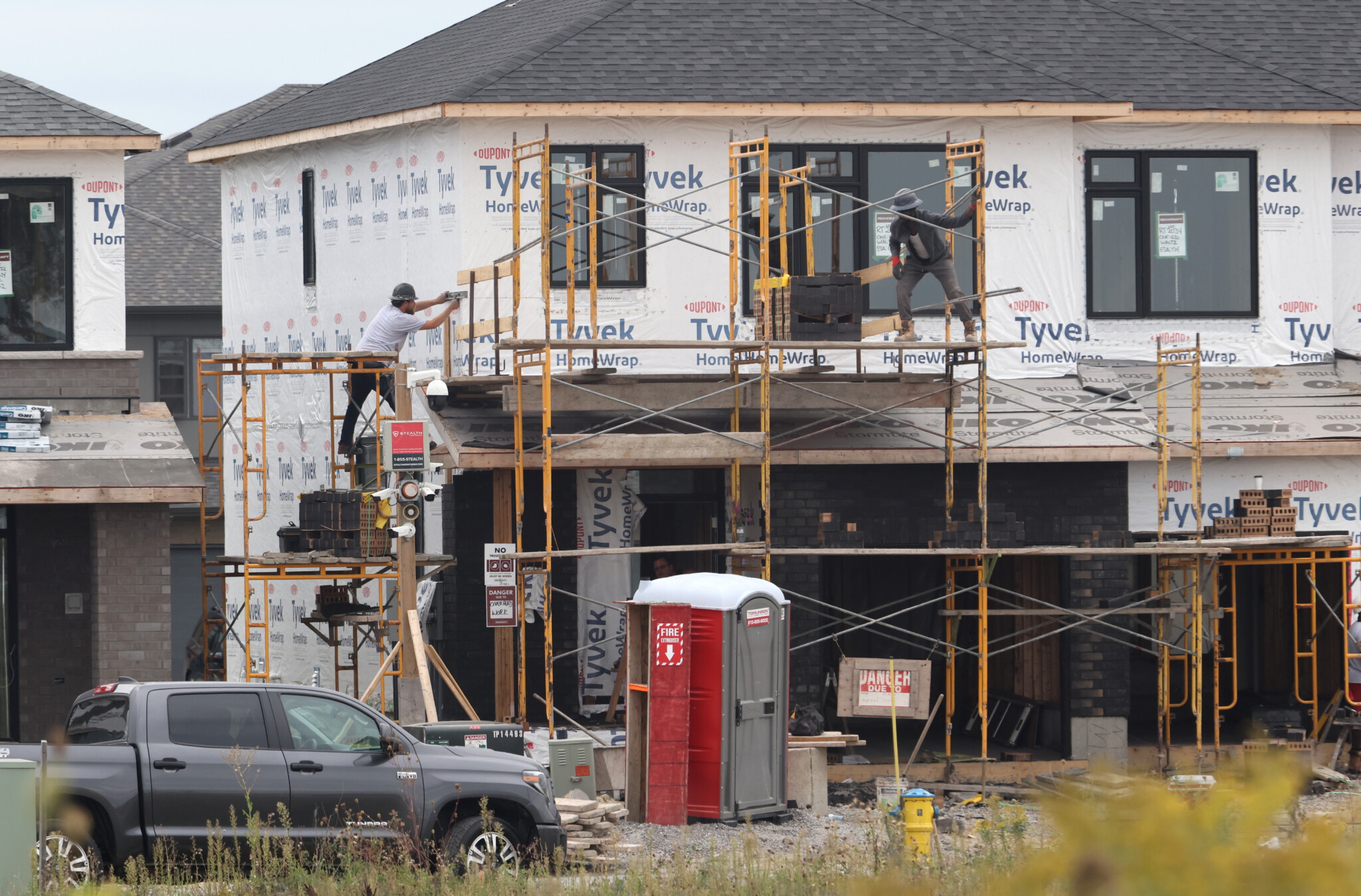Housing affordability remains a crisis in Canada, and any solution to that crisis requires driving down the costs of building a new home. The vast array of taxes, fees, and charges are among the largest and fastest-growing cost drivers of new home construction, making up an estimated 31 percent of the cost of home construction in Ontario, so tax reform must be at the heart of any affordability agenda.
The majority of these taxes and charges, from land transfer taxes to development charges, are out of the direct control of the federal government, but there is one completely in their control: the Goods and Services Tax (GST).
The federal government should take the opportunity to build on its removing the GST on rental apartment construction and fulfill a broken federal commitment from three decades ago: to substantially lower the GST on new ownership housing through enhancing the outdated GST New Housing Rebate to help increase affordability for Canadians.
Like most, but not all, goods and services, new home buyers must pay a 5 percent GST on the purchase of a newly constructed home. When the Mulroney government designed the GST, they recognized that it could harm housing affordability, so they designed a rebate system to “ensure that the new [GST] system does not pose a barrier to the affordability of housing in Canada.”
Currently, homebuyers who are Canadian residents and planning to use the property as a primary residence receive 36 percent of GST paid returned to them when purchasing a newly-constructed home priced under $350,000, to a maximum return of $6,300. This amount is clawed back for homes priced between $350,000 to $450,000, and for homes priced over $450,000, no rebate is returned at all. Since the average home price in Canada exceeds $700,000, very few new home sales qualify for any rebate whatsoever.
The GST rebate eligibility thresholds are low because they have not been updated since November 1991, so their value has been eroded over time due to home price inflation. Michael Wilson, Mulroney’s finance minister, had recognized that inflation would limit the effectiveness of the housing rebate, so before implementing the tax, the federal government committed to “review[ing] these thresholds at least every two years and adjust[ing] them as necessary to ensure that they adequately reflect changes in economic conditions and housing markets.” To date, no federal government has lived up to this commitment, and home price inflation has eroded the rebate program to the point of near-obsolescence.
In 1992, the vast majority of new homes sold for under $350,000 and qualified for the full 36 percent rebate. By our estimates, back in 1992, the federal government collected less than $2 billion in GST revenue from home construction for primary residence ownership homes and returned $520 million to these buyers, according to the Report on Federal Tax Expenditures.
During the early 2000s, both GST paid on new homes and GST rebates soared, as ownership housing construction was strong and home prices were rising, so governments were collecting more on each sale. The price of a new home in most of the country remained under $350,000, so most homebuyers were still collecting the full 36 percent rebate, while others collected partial rebates.
The rise in tax collections and rebates quickly ended as the Harper government’s cutting of the GST from 7 percent to 6 percent in 2006 and then to 5 percent in 2008 caused a substantial reduction in taxes paid and rebates issued. Since 2008, the amount of GST new housing rebates returned to buyers has steadily declined despite home prices increasing by 144 percent since March 2009. In 2022, the federal government returned only $410 million in rebates, collected on an estimated $5.5 billion collected, for a refund rate of 7.4 percent. In 1992, the rate was over 30 percent. As home prices skyrocketed across the country in the last 15 years, the proportion of new homes selling for $450,000, let alone $350,000, has collapsed, as most new homebuyers are not collecting any rebate at all.
By our rough estimates, the situation has deteriorated further since 2022, noting that only rough estimates are possible as the federal government releases almost no data on new home prices. Given the recent increase in home prices in more affordable markets like Edmonton, Halifax, and Montreal, the proportion of new home sales under $450,000 has substantially declined. Our rough estimates show that, in 2024, GST collected on home construction for primary residence ownership homes will exceed $6 billion, and rebates will be under $300 million for a refund rate of under 5 percent.
Fixing the broken GST New Housing Rebate should be a top priority for the federal government. They do have the option of eliminating the federal portion of the GST altogether on new ownership housing, as they did with new rental housing. Given that this would be the federal portion only, it wouldn’t require any compensation to provinces, making it easy to implement. At a fiscal cost of $6 billion a year, the full-elimination option is likely off the table for the current and future federal governments. A less expensive option would be to recognize that home prices have more than tripled since 1991 and to adjust the thresholds accordingly.
Raising the lower threshold from $350,000 to $1,000,000 and the upper threshold from $450,000 to $1.5 million would nicely mirror the federal government’s recent changes to insured mortgage rules. Our GST New Housing Rebate calculator estimates that this would return an additional $1.7 billion to homebuyers each year—a more manageable sum for any federal government.
Such a rebate would not only help lower the after-tax cost of new homes, but it would also put downward pressure on the price of existing homes, as the price and availability of new homes impact those already built, a phenomenon we saw play out during the pandemic, as used car prices moved in response to the price and availability of new cars. However, we also need a suite of supply-side reforms to facilitate the building of new homes; otherwise, the benefits of the GST cut will eventually be recaptured by existing homeowners through increases in demand driving up prices.
It is never too late to do the right thing. The federal government should build on its successful housing tax reforms and institute the Mulroney-era commitment to regularly adjust the GST New Housing Rebate to help restore affordability for Canadian homebuyers.











